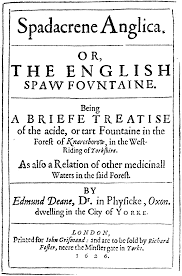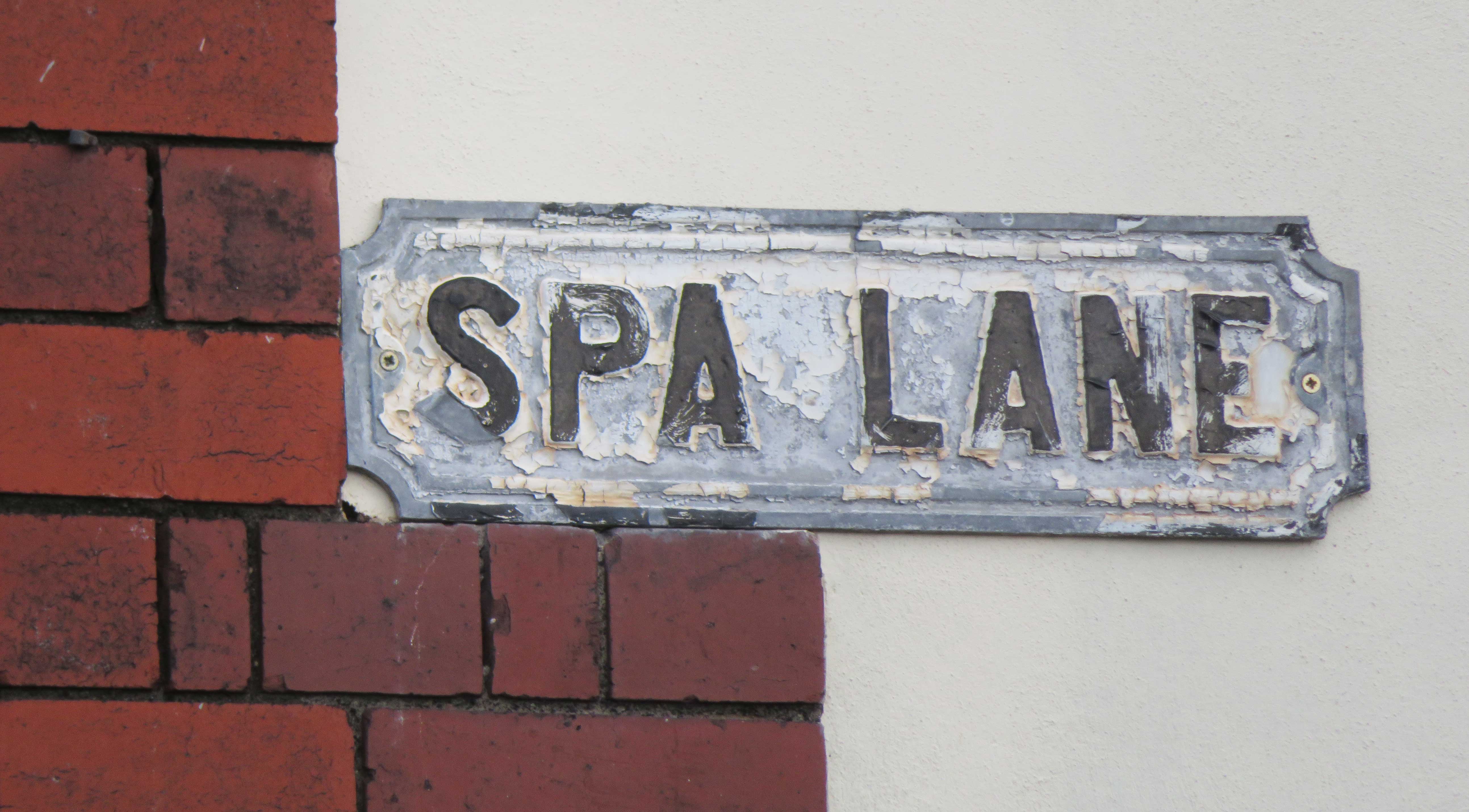Comparison
In 1914 Robert Murray Gilchrist said of Harrogate: ‘In the season it is
as gaily-colored as any watering-place in Europe.’ But comparisons of the
town’s social atmosphere, and of its waters, with those of places on the
continent go back a long way.
William
Slingsby (1563–1634) is credited with recognising the medicinal qualities of
Harrogate’s mineral waters in 1571. Having travelled through Europe earlier in
his life, he had knowledge of the Sauvenir and Pouhon wells at Spa, the
celebrated health resort, located in what today is Belgium. Slingsby detected
similarities between these famous waters and the waters of Harrogate’s
Tewit Well. Dr Timothie Bright (1551–1615) who had also travelled the continent,
spoke of ‘Harrogate spaw’ in a treatise published in 1598; and in 1626, Dr Edmund
Deane (1572–1640) called Harrogate the English spa, or Spacradene Anglica. Thus, the use of the word Spa in English, as a
general noun for a watering-place, is inextricably linked to Harrogate and its
perceived comparability with the eponymous original.


Images © Royal Pump Room Museum, Harrogate Borough Council
Ever since Slingsby’s time medical
manuals have also compared Harrogate’s waters with famous continental springs in
places other than Spa, such as Aix-la-Chapelle, Bagnères de Luchon or indeed Kissingen,
after which one of its wells was named to indicate the likeness.
And visitors with a knowledge of spa resorts both in Britain and on the continent – such as Hermann von Pückler-Muskau or Augustus Bozzi Granville – would find some striking similarities between Harrogate and its continental counterparts.
Harrogate also features on the international spa itineraries of a number of luminaries of their time, such as Princess Alix of Hesse (later Tsarina of Russia) and the philosopher and political theorist Karl Marx.
And visitors with a knowledge of spa resorts both in Britain and on the continent – such as Hermann von Pückler-Muskau or Augustus Bozzi Granville – would find some striking similarities between Harrogate and its continental counterparts.
Harrogate also features on the international spa itineraries of a number of luminaries of their time, such as Princess Alix of Hesse (later Tsarina of Russia) and the philosopher and political theorist Karl Marx.

Source: Wikimedia Commons
Due to the revolutionary character of his philosophical and political
writings, Karl Marx and his family had to emigrate from Germany via France to
Britain. In August 1849 they settled in London, where they lived with the moral
and financial support of Marx’s friend and collaborator Friedrich Engels (whose
family had invested in cotton manufacturing in the Manchester area), and where Marx
and his wife are buried in Highgate Cemetery. Both had ongoing health problems
and were regularly sent to spas. Marx suffered from liver trouble and rheumatism,
but also bronchitis and carbuncles – both, scientists now think, owing to his
habit of smoking cigars.
Viktoria Alix Helene Luise Beatrix of Hesse and by
Rhine was one of Queen Victoria’s granddaughters. After her mother's death,
Alix spent long periods of time in Britain where she lived under the care of
her grandmother. At the same time, the Duchy of Hesse and by Rhine had close
family ties to Russia. After a long courtship, Alix became engaged to Nicholas,
the heir to the Russian throne. The marriage took place in 1895, shortly after
the unexpected death of Nicholas's father, Alexander III. Alix adopted the
Orthodox religion and from then on bore the name Alexandra Fyodorovna. The
newly married couple were crowned rulers of Russia in May 1896. Alix/Alexandra
suffered from sciatica and had difficulties walking and standing for long
periods. She was thus regularly sent to spas such as Bad-Nauheim and Harrogate.
Most of her spa life, however, was spent in the Crimea, where the tsar’s family
had been in the habit of taking their summer and winter holidays since the
middle of the 19th century, and where they owned several residences. Indeed,
because of her status, Harrogate was the only spa place where Alix/Alexandra
stayed in a house that was not owned by members of her extended family, and
thus went through the full spa experience.
Later, the Tsarina suffered additionally from diseases of the heart and nerves, which according to medical and historical research may have been psychosomatic in origin. The duties of representation as a member of the imperial family weighed on the naturally rather reserved woman. The incurable haemophilia that afflicted her son Alexei, the heir to the throne on whom the survival of the Romanov dynasty depended, contributed decisively to the ruin of her nerves and health. Alexei also received medical treatment in health resorts. Among other things, special healing earths for mud baths were brought by ship from the Crimean spa Saki to the tsar's residence in Livadiya. However, the treatments could only ever alleviate the symptoms of the suffering child and did not bring any long-term improvement.
Later, the Tsarina suffered additionally from diseases of the heart and nerves, which according to medical and historical research may have been psychosomatic in origin. The duties of representation as a member of the imperial family weighed on the naturally rather reserved woman. The incurable haemophilia that afflicted her son Alexei, the heir to the throne on whom the survival of the Romanov dynasty depended, contributed decisively to the ruin of her nerves and health. Alexei also received medical treatment in health resorts. Among other things, special healing earths for mud baths were brought by ship from the Crimean spa Saki to the tsar's residence in Livadiya. However, the treatments could only ever alleviate the symptoms of the suffering child and did not bring any long-term improvement.
 Alexandra in Livadiya, Crimea, 1916
Source: www.romanovempire.org/
Alexandra in Livadiya, Crimea, 1916
Source: www.romanovempire.org/Considering their spa-itineraries, and seeing Harrogate alongside the other
resorts they visited, enables us to reconstruct comparisons they themselves
would have made.

Street sign in Starbeck, Image © Astrid Köhler



